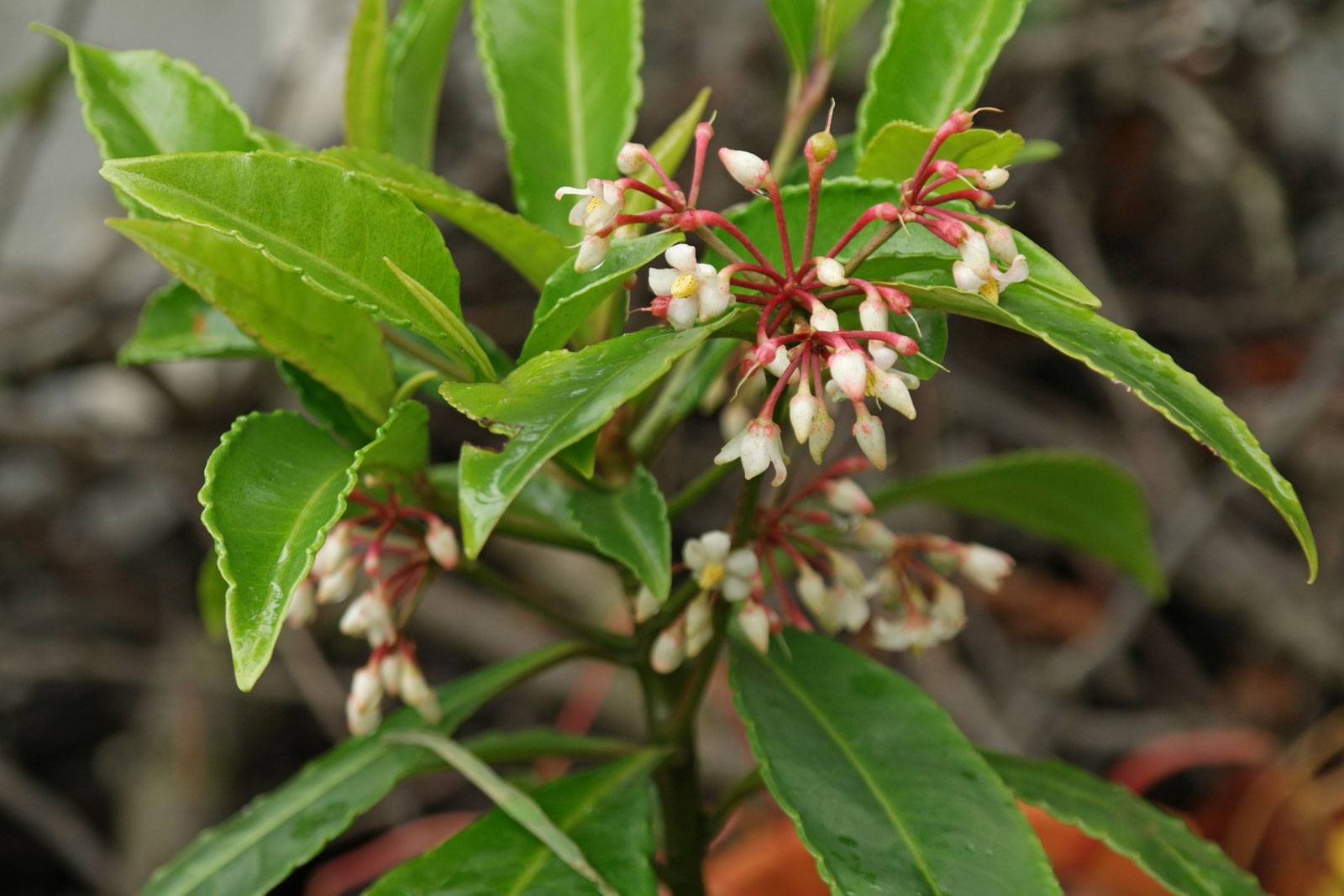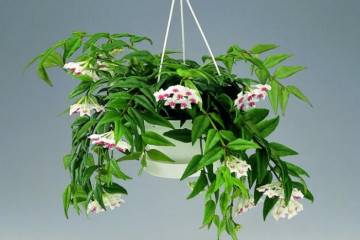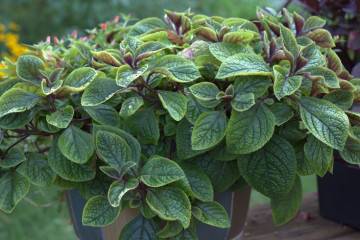Ardisia - home care, reproduction and species
Content:
The homeland of the decorative evergreen plant Ardisia from the Mirsinovy family is Southeast Asia. All novice growers should know what kind of care is required at home in order to grow her healthy and beautifully blooming.
Botanical description of ardisia
Against the background of glossy leathery elliptical leaves, delicate inflorescences flaunt, which are replaced by bright red fruits.
There are over 400 varieties of Ardisia, but not all of them are suitable for home cultivation:
- Ardisia crenate is a tall bush about 2 m high. The plant has beautiful lacy elongated leaves with wavy edges. The inflorescences consist of small white or pink flowers.
- Curly - a tall bush covered with leathery emerald oblong openwork leaves. The cream-colored flowers exude a sophisticated scent. Bright beaded berries do not fall off until a new bloom.
- Low - short shrub has a dark green crown. Paniculate inflorescences consist of small pink flowers. Brown red berries turn black over time.
- Solanacea is a showy plant with light red shoots and light green leaf blades. Inflorescences are pink or pale lilac. Light red fruits darken and acquire shine as they ripen.
- Elliptical is a garden plant with pinkish flowers. At first, the berries are red in color, but over time they acquire a purple hue.
Ardisia: home care
In order for the unpretentious ardisia to take root and delight its owners with lush greenery and beautiful flowering, you need to properly care for it. Optimal growing conditions are at room temperature. In summer, the temperature should be from +18 to +26 degrees, and in winter from +14 to +16 degrees.
The light-loving ardisia krenata needs a lot of sunlight, but at the same time it must be protected from direct rays. She also needs regular watering. The water should be separated, at room temperature. With poor watering, indoor plants Ardisia crenate do not bloom well. In warm weather, watering is carried out immediately, as soon as the top layer of the earth dries up. In the cool season, moisture should be moderate.
The average level of air humidity required for this culture should be at least 50-60%. If the air in the room is very dry, then it must be humidified with a simple spray of water.
Ardisia flower grows best in light soil consisting of sand, peat and dry leaves. You can also add some coconut fiber and charcoal. Young plants are regularly fertilized with mineral compounds, humus and peat twice a month. Take a break in winter.
Pruning is essential in crop farming. To create a correct and beautiful crown shape, ugly, damaged and dry shoots are cut off. The procedure is carried out in early spring, before the flowering period begins.
Flowering and fruiting
A distinctive feature of Ardisia Crenata is a beautiful long flowering.Inflorescences of numerous small flowers appear against a background of dark green leaves. Pearl pink buds emit a delicate pleasant aroma. The first milky berries appear in mid-December. Fruits turn red as they ripen.
How ardisia reproduces
Culture propagation is carried out by seed and vegetative method.
Getting ardisia from seeds at home is quite simple. Seed material obtained from ripe fruits is sown in a sand-peat mixture to a depth of 1 cm. The crops are covered with foil and placed in a warm, bright place. When full-fledged three leaves appear on the sprouts, they are seated in pots.
When propagating by cuttings from an adult plant, part of the shoot with 3 internodes is cut off and planted in the soil under glass.
Young ardisia are transplanted every year, and adults every three years. The flower is carefully removed from the pot, being careful not to damage the earthen lump. Then it is placed in a new pot, in which the drainage layer is pre-laid. Rhizomes are sprinkled with soil and watered with warm water.
Possible problems in growing ardisia
Violation of agricultural technology provokes various problems with the plant:
- The foliage turns yellow. The reason that the leaves turn yellow and fall off on ardisia is dry soil or dry air.
- Drops the leaves. Violation of the watering regime can cause foliage to fall off.
- The leaves turn pale. In poor light, the culture loses its bright juicy color.
- The tips of the leaves turn brown. Drafts and dry air appear as dry brown leaf tips.
Pests
Like many indoor plants, ardisia is susceptible to damage by the whitefly, spider mite, and scabbard. The provoking factor for their appearance is improper care.
Other problems
Another common problem is lack of budding. This could be due to a lack of moisture or a recent flower renewal.
Growing precautions
Ardisia fruits are poisonous. They should not be eaten. In rooms where small children or animals live, bush pots should be placed out of their reach.
Ardisia is a beautiful shrub that will become one of the best home decorations. With a little effort, the florist will receive an exquisite plant with high decorative characteristics.


















